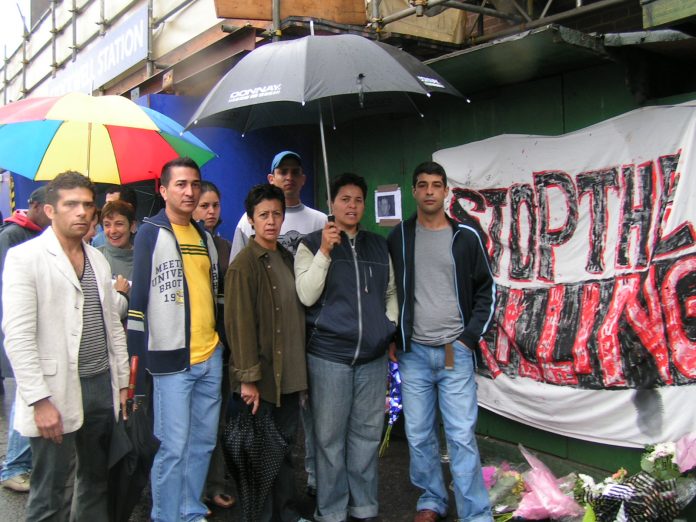The Russian Space Agency (Roskosmos) is about to start its Kliper launch vehicle project, the head of the agency told a Moscow press conference on Thursday.
This is to be part of a new planned space programme.
The Russian government has approved a new 10-year space programme budget that will total about 300 billion roubles ($10.5 million).
That budget will include funding for development of a reusable spacecraft to replace Russia’s aging Soyuz manned launch vehicle.
Speaking to reporters after a Cabinet session, Roskosmos head Anatoli Perminov said other national space agencies, in particular the European Space Agency, were very much interested in the Kliper project.
He said that the Kliper launch vehicle, which Russia is to build in collaboration with other countries, would be able to carry a crew of six and land on first-class airfields.
During the press conference, Perminov also spoke briefly about Roskosmos’s planned Phobos Grunt mission to collect soil samples from the martian moon Phobos.
‘We see this as a Russian project, but are open to the idea of foreign participation. We would like it to be an international project,’ he added.
The Russian space agency head also said an ‘invaluable’ Earth-based experiment to prepare a mission to Mars was planned for next year and that over two dozen people had already volunteered to take part in the project.
To test whether it is possible for humans to make the flight to Mars, six volunteers will spend 500 days in a mock space module in Moscow.
Meanwhile, speaking in Plesetsk, Arkhangelsk Region, Lt-Gen Anatoliy Bashlakov, head of the Plesetsk spaceport, confirmed that the Russian Space Troops have joined the aerospace industry in a bid to develop a new Soyuz-2 medium launch vehicle.
He said: ‘The Samara-based TsSKB-Progress design bureau is developing a new Soyuz-2 launch vehicle to lift Russian spacecraft into orbit. Several phases of the development are envisaged.’
According to Bashlakov, the first phase will see the introduction of a digital control system on a modern Russian element base, which will ensure flexible re-targeting of the vehicle in flight.
Apart from that, there are plans to ensure that all expendable parts of the new vehicle should fall down in one set area, which should ‘considerably reduce the cost of their destruction’.
‘The second phase envisages the replacement of the power plant of the third stage with a totally new one with better propelling capabilities, which will make it possible to substantially increase the payload to 8-8.2 tonnes,’ he said.
Bashlakov, also said there are plans to replace the cosmodrome’s telemetric assets.
‘The service lives of the telemetric assets have completely expired, and maintenance of this equipment at the required level of reliability costs a lot of money.
‘In order to maintain the operability of the cosmodrome’s telemetric system, we are planning to fit it with relatively cheap equipment of a new generation,’ Bashlakov explained.
In particular, he said the system will be equipped with small-size universal reception and registration stations that do not require a lot of maintenance personnel.
In addition, transmitters and antenna-feeder devices will be upgraded, he said.
‘We are also restructuring the cosmodrome’s electric power supply network.
‘Our plans include the construction of a substation and 27 km of high-voltage lines,’ Bashlakov said.
Moreover, the cosmodrome is upgrading its airfield so that it can receive medium-class planes, such as the Il-76.
‘Reconstruction of taxiways is to be completed in 2005.
‘Our subsequent plans include fitting the airfield with a new air fleet, automobiles, radio-technical and illuminating equipment. Construction of a passenger terminal is also in our plans,’ Bashlakov said.
According to him, these measures ‘will bring the airfield up to the first-class level’.
Meanwhile, the Russian Space Troops last Friday extended a moratorium on launches of Molniya-M launch vehicles.
Their use was suspended after an unsuccessful launch on 21 June when a military satellite failed to reach orbit from the Plesetsk cosmodrome.
An interdepartmental commission has looked at 18 possible theories to explain the accident. But that is still not enough.
Interviewed on Channel One TV, Moscow, Vladimir Popovkin, commander of Russian Federation Space Troops said: ‘A series of investigations is currently being carried out at the Progress central specialised design bureau, and their results will be used to draw up a whole package of measures in order, firstly, to check the stock of these rockets that we have at the Defence Ministry.
‘I think we have two other such rockets, isn’t that so?’
An off-camera male voice was heard to say: ‘Two at the cosmodrome.’
Popovkin continued: ‘Two at the cosmodrome.
‘To eliminate all these defects in order to be able to embark on further work in a guaranteed fashion.
‘Until this package of measures is implemented, we will not, naturally, be carrying out launches of delivery vehicles of this type.’
Popovkin, told journalists at a later press conference that it is planned to launch a new reconnaissance spacecraft by the end of the year.
He said: ‘We are planning to carry out the launch this year.’
He said that a number of measures are currently under way to supplement Russia’s military orbital group.
‘’The most difficult situation is with the reconnaissance component. Tests on a new system have started. Unfortunately, not everything is going well,’ he said.
He added that supplementing the Russian navigational satellite system GLONASS is also of great importance to the Space Troops.
‘With normal funding the group will be restored in 2008,’ he said.
He said that the Space Troops had re-aligned a number of communications satellites to provide back-up for the Combined Force in the North Caucasus, especially in the mountainous part of Chechnya.
‘Re-alignments were made to provide the units with reliable communications,’ he said.
